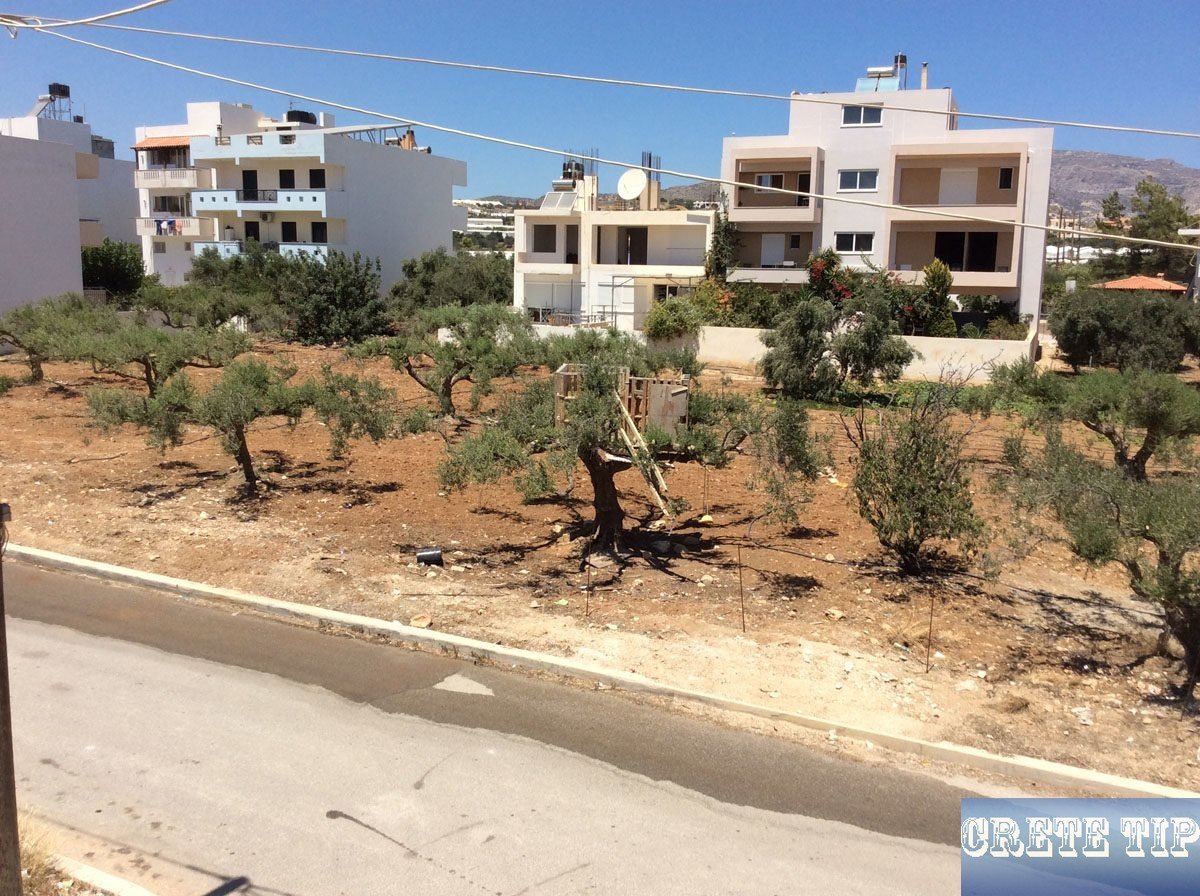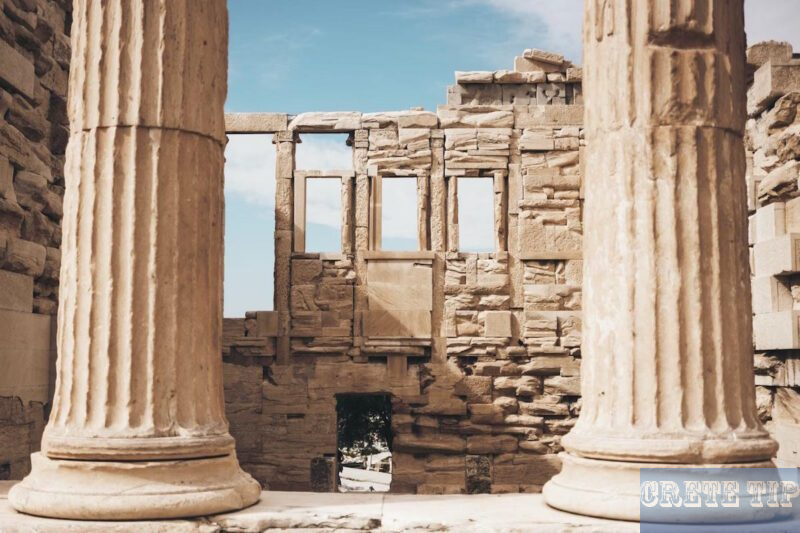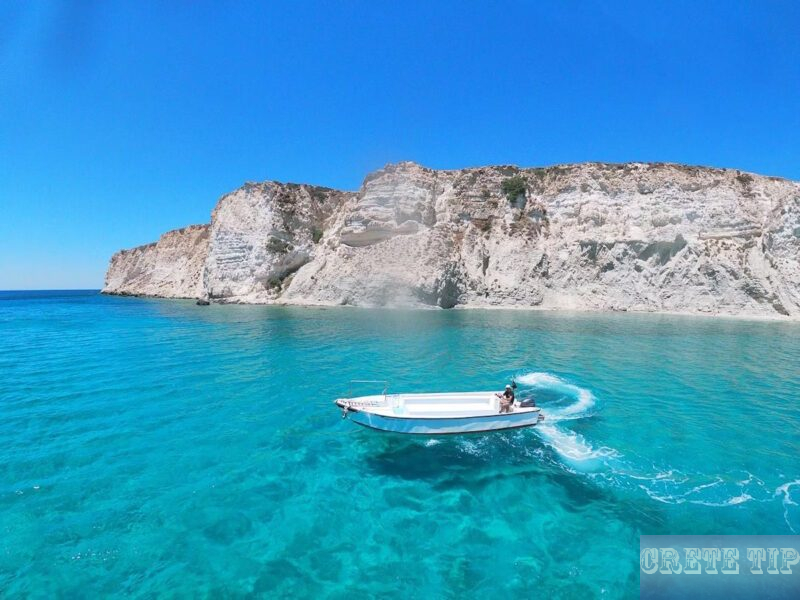Assessment of recent seismic activity in Greece.
Crete is the largest of the Greek islands and a significant part of the eastern Mediterranean region.
It’s got a reputation for rich history, wild landscapes, and some truly important cultural sites.
The island played a central role in Greek civilisation, once home to the ancient Minoans.
Nowadays, Crete draws people in with its traditions, lively towns, and natural beauty—it’s a magnet for both visitors and researchers.
End of the “Seismic Lull”: Earthquake Activity Returns in the Aegean – What is Happening in Crete
The Aegean region has started seeing a clear uptick in earthquake activity after a stretch of relative calm.
Recent strong tremors have rattled Crete and areas nearby.
Key Details:
- There’s been a spike in seismic events, especially in the Cretan Sea and around Santorini.
- Experts have reported several strong earthquakes, some above 6.1 on the Richter scale.
- Places like Lasithi in Crete have definitely felt the shakes.
In just the last few weeks, significant seismic activity has been noted across the southeast Aegean, hitting spots like Crete, Rhodes, and the surrounding islands.
Scientists are paying attention, as the frequency and size of earthquakes in the area have noticeably picked up after nearly four years of relative quiet.
Recent Seismic Events
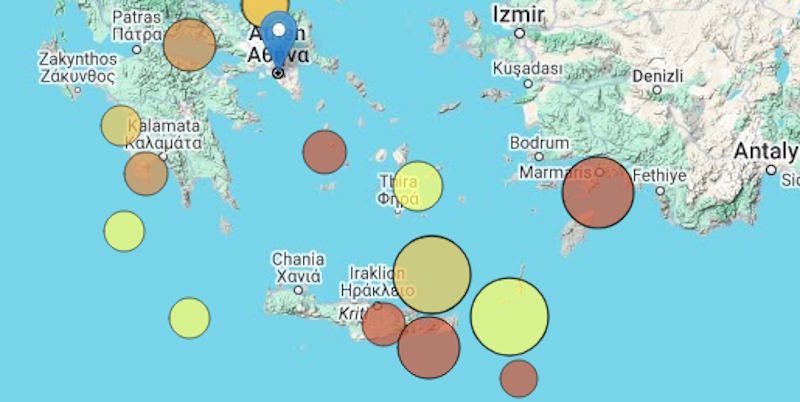
Here’s a quick timeline of major quakes:
Date |
Location |
Magnitude (Richter) |
|---|---|---|
14 May |
Between Kasos and Karpathos |
6.1 |
22 May |
Near Lasithi, north of Crete |
6.1 |
2 June |
Between Rhodes and Turkey |
5.8 |
3 June |
14 km east of Lasithi, Crete |
5.3 |
All four of those, hovering around magnitude 6, happened within about three weeks. That’s not exactly normal for the region, so specialists are keeping a close eye on what’s going on in the southeast Aegean.
Geologic Influences
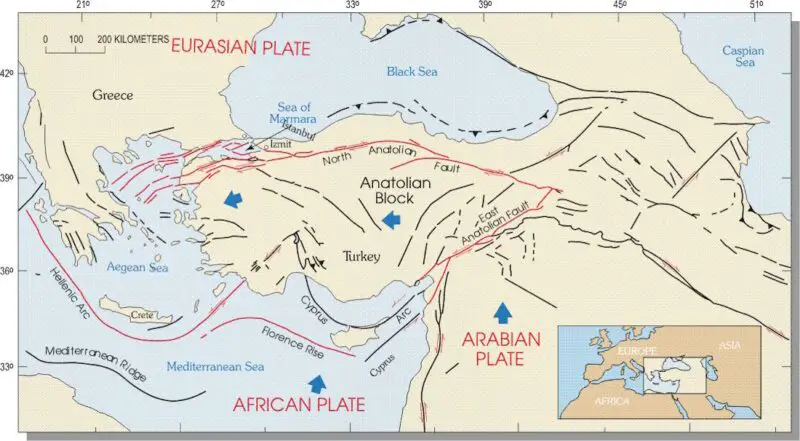
What’s driving this? The African lithospheric plate keeps pushing north, right toward the Greek arc.
This pressure and movement make faults slip, releasing energy as earthquakes. Leading seismologists say this is directly tied to the geographical risks faced by Crete, Rhodes, and the nearby islands.
Fault Activity
The faults here sometimes go quiet for years.
When that lull ends, you often get a burst of moderate to strong earthquakes, just like we’ve seen lately. This fits the known seismic cycles in the eastern Mediterranean.
Scientific Attention
This recent string of strong quakes has drawn renewed interest from both Greek and international seismologists.
Researchers are digging into the data, looking at how pressure from the African plate affects local faults. They’re hoping to get a better sense of the timing and pattern of future events, though, honestly, it’s never easy to be sure.
Understanding Seismic Patterns
- Seismic Lull: Before this, the region had almost four years with barely any big quakes.
- Renewed Activity: The strong recent tremors show the quiet phase is over, at least for now.
- Statistical Monitoring: Scientists are tracking both how often and how strong these quakes are, looking for meaningful patterns.
- Regional Focus: Most of the action is around the southeast Aegean—mainly near Crete and Rhodes.
Effects on Local Communities
Folks in Crete, Rhodes, and neighboring islands have definitely felt the recent earthquakes.
While buildings are generally designed with quakes in mind, the uptick in moderate to strong events has people paying closer attention to safety and preparedness. Some have reported mild aftershocks, but so far, local authorities are on it, keeping communities informed.
International Cooperation
The Aegean is just one part of a much larger seismic zone stretching across southern Europe and into Asia.
Because of that, scientists and monitoring centers often work together, sharing data and comparing trends to sharpen their models of tectonic movement.
Monitoring Networks
Modern seismic stations all over Greece and its islands send out real-time updates on earthquake activity.
These networks collect useful details on each quake, like:
- Exact location and depth
- Magnitude
- How long the shaking lasted
- Aftershock sequences
All this helps scientists build a clearer picture of long-term seismic hazards—though, let’s be real, predicting the next big one is still tricky.
Ongoing Research
Research teams are still trying to figure out what’s behind this recent jump in seismic activity.
- The rate of tectonic shift along the Hellenic Arc
- Patterns of stress building up along known fault lines
- Historical cycles of earthquake clustering in the region
- Effects on smaller, neighboring fault zones
By digging into these factors, experts hope to make early warning systems and public awareness better than ever.
Overview of Seismic Activity (Recent Weeks)

Event |
Date |
Location |
Depth (km) |
Reported Impacts |
|---|---|---|---|---|
Earthquake |
14 May |
Kasos–Karpathos |
Shallow |
Felt in several islands |
Earthquake |
22 May |
North of Crete (Lasithi) |
Moderate |
Minor structural damages |
Earthquake |
2 June |
Near Rhodes–Turkey |
Shallow |
Shaking reported by locals |
Earthquake |
3 June |
East of Lasithi |
Moderate |
Short interruptions noted |
Most of these happened at shallow depths, which tends to make things shakier for people on the surface.
Safety Measures and Community Information
Local authorities are urging residents and visitors in quake-prone areas to keep their safety plans up to date.
Some standard advice:
- Keep emergency kits at home and at work
- Know the safest spots in each room (like under sturdy tables)
- Learn evacuation routes
- Stay in the loop with local alerts and official advice
Lots of schools and public buildings run regular drills, so folks know how to react if a quake hits.
Communication and Updates
Seismic activity updates come from a few main sources:
- The Hellenic National Seismological Network
- Local emergency and civil protection agencies
- News outlets and public announcements
These channels keep people informed about the latest quakes, potential risks, and what they should do next.
The Role of Technology
Modern monitoring uses a mix of tools and methods, like:
- Seismographs: These measure ground shaking
- GPS Stations: They track tiny shifts in land position
- Data analysis software: Software helps scientists spot trends and maybe even forecast future shakes
The tech keeps improving, making it easier to spot smaller quakes and understand aftershock patterns.
Key Points at a Glance
- There’s been a clear rise in moderate to strong earthquakes near Crete and Rhodes.
- Recent events ended a several-year stretch of reduced activity.
- The main cause? Ongoing tectonic plate movement, especially pressure from the African plate.
- Local and international experts are studying these quakes to improve forecasting and safety.
- Residents are encouraged to stay prepared and follow official safety advice.
FAQs about Recent Aegean Earthquakes
Q: Why have there been more earthquakes lately?
A: The southeast Aegean is seeing more quakes because of tectonic shifts along the region’s fault lines, mostly due to plate movement.
Q: Are more strong earthquakes expected soon?
A: No one can say for sure, but these active periods sometimes last weeks or months. That’s why monitoring is so important.
Q: What should people do to stay safe?
A: Stick to local safety advice, know what to do during a quake, and have emergency supplies ready.
Q: At what depth do these earthquakes usually happen?
A: Most have been at shallow to moderate depths, which means they can be felt more strongly on the surface.
Summary Table: Earthquake Activity (May–June)
Date |
Approximate Location |
Magnitude |
Depth |
Notable Effects |
|---|---|---|---|---|
14 May |
Kasos–Karpathos |
6.1 |
Low |
Shaking, widespread awareness |
22 May |
North of Crete (Lasithi area) |
6.1 |
Mid |
Minor structural issues |
2 June |
Between Rhodes and Turkey |
5.8 |
Low |
Widely felt, no major damage |
3 June |
East of Lasithi |
5.3 |
Mid |
Limited impacts reported |
If you’re looking for more details or the latest updates, it’s best to stick with official scientific sources or check in with local authorities. Staying informed and planning ahead—well, it can’t hurt when it comes to earthquakes.
Assessments
There’s been a noticeable change in the seismic profile of Greece and the surrounding region lately. After a pretty quiet stretch starting back in October 2021, earthquakes are back on the rise.
The Kasos–Karpathos quake kind of kicked things off, setting off activity in the eastern Hellenic arc. This has brought about some major geodynamic changes and, honestly, probably more to come.
Increased Seismic Activity
Seismologists point out that the recent earthquakes are a sign that major faults are moving again. The size and frequency of these quakes make it pretty obvious that some serious pent-up energy is being released.
- Energy Release: Several noteworthy quakes have topped 6 Richter, which says a lot about what’s going on below.
- Expansion of Events: After the initial shock, tremors started popping up in other regions, so it’s definitely not just a single area that’s active.
Fault Dynamics
Experts keep a close eye on the region’s faults because they’re capable of producing some pretty strong earthquakes. These fractures are shaped by tectonic plate movement, especially where the African plate dives beneath the one under Greece.
- Types of Faults: Faults around the seismic arc react to the stress created by those colliding and sliding plates.
- Stress Build-Up: Over time, stress piles up at these fault lines, and eventually, something’s gotta give.
Table: Recent Earthquakes in the Region
Date |
Location |
Magnitude (Richter) |
Impact |
Focal Depth (km) |
|---|---|---|---|---|
27 Sept 2021 |
Near Arkalochori, Crete |
6.0 |
Building damage |
Moderate |
12 Oct 2021 |
Near Zakros, Crete |
6.3 |
Mild tsunami |
Moderate/Deep |
2022-2024* |
Kasos & Karpathos area |
>6.0 |
Ongoing analysis |
Not disclosed |
Recent |
Between Rhodes & Turkey |
5.8 |
Casualties in TR |
Shallow |
*These entries show that seismic activity in the years after 2021 has been anything but predictable.
Role of the Scientific Community
Scientists are keeping a constant watch on these developments. They’re always analyzing readings from seismic stations, looking for patterns, and trying to figure out what might be coming next.
Seismic waves are full of hints, if you know how to read them.
Scientific Actions:
- Regular checks of seismic data and updates to risk maps
- Installing and maintaining equipment that records every shake and rattle
- Working with researchers from neighboring countries to swap data and insights
Tectonic Plate Movements
Greece sits right where things get interesting, geologically speaking. The African plate is slowly shoving its way beneath the Aegean, which is part of Eurasia, and that’s the main driver behind most earthquakes in the area.
Key Factors:
- Subduction Dynamics: The heavier African plate pushes down under the lighter continental plates, creating stress points and weak spots.
- Plate Boundaries: These boundaries are messy—full of bends and breaks—so earthquakes come in all shapes and sizes.
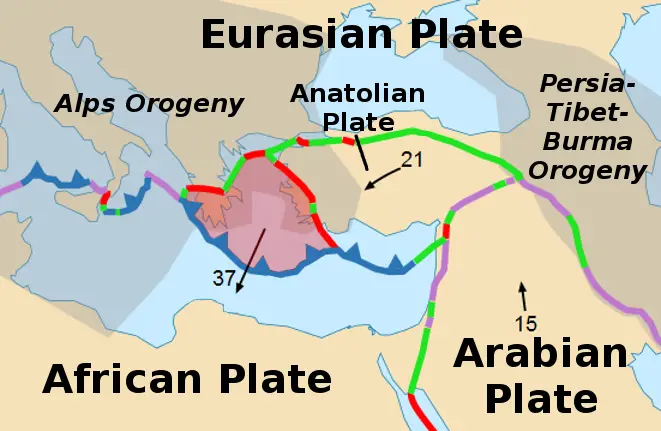
Richter Scale and Seismic Energy
Earthquakes are measured with the Richter scale, which basically tells you how much energy gets let loose. Each jump up a number means ten times more shaking and about 32 times the energy. It’s a bit wild, actually.
Examples:
- A 3 Richter quake might rattle your dishes but usually doesn’t do much else.
- Anything above 6? That’s when stuff starts to break and, sometimes, tsunamis are triggered.
Fault Strain and Risks
Monitoring shows the Hellenic region’s faults are still under a lot of strain. As those plates keep pressing, more earthquakes—possibly big ones—are always a possibility.
Important Aspects:
- After a lull, an uptick in seismic activity can mean stored energy is finally being released along stuck fault lines.
- Even moderate shakes can be a big deal, so they shouldn’t be ignored.
Geodynamic Consequences
When seismic energy is released, it messes with stress patterns across the region. That can set off aftershocks or even trigger new movements on nearby faults. It’s a tangled process, reaching deep underground.
- Aftershock Patterns: Experts analyze aftershocks for clues about what might come next.
- Changes To Land: Sometimes, the ground actually lifts or sinks after a big quake. Nature’s got its own plans.
Case Studies
Crete Region Events
The September 2021 quake near Arkalochori was shallow enough to cause real damage—buildings collapsed, people were hurt, and lives were lost. Then in October, another one hit offshore near Zakros, triggering a mild tsunami but not much local destruction.
Rhodes-Turkey Earthquake
The 5.8 quake between Rhodes and Turkey led to casualties on the Turkish side. Local scientists say the area’s fault structure means even bigger earthquakes are possible, which is a bit unsettling.
Seismologist Viewpoints
According to experts like Gerasimos Papadopoulos and Vassilis Karastathis, nowhere along the Hellenic arc is truly safe. The 6.6 quake near Karpathos in 1996 is still fresh in a lot of minds. These faults are long overdue for strong earthquakes, especially when you factor in mountains and the way the plates bend and shift.
List: Key Observations by Seismologists
- Strong earthquakes often follow long periods of smaller tremors.
- Subduction keeps adding stress to the arc.
- Both regional and local faults need to be watched.
- Looking at tremor patterns helps with risk forecasts, though nothing’s ever certain.
Societal and Policy Implications
Public agencies really need to stay ready. Even a moderate earthquake can cause serious trouble, especially in older buildings or places that weren’t built for shaking.
Table: Preparedness Steps
Action |
Purpose |
|---|---|
Seismic risk mapping |
Identifies most vulnerable areas |
Emergency drills |
Helps public respond quickly to tremors |
Building reinforcements |
Reduces potential for structural failures |
Information campaigns |
Promotes public awareness and safety |
Regional Variations
Earthquakes don’t hit everywhere the same way. Deep faults might shake less at the surface, but shallow quakes—those can do a lot of damage, even if they’re not huge.
Examples:
- The recent offshore quake near eastern Crete mostly caused a mild tsunami and little property loss.
- On the mainland, the outcome depends a lot on depth and the path the energy takes—sometimes it gets dramatic.
Statistical Trends
From late 2021 into early 2025, there was a weirdly quiet stretch for earthquakes. But quakes don’t run on a schedule—sometimes you get clusters, sometimes nothing for a while. It’s all about how energy builds and releases along those complicated faults.
Trends Seen:
- Quiet stretches happen naturally, but they often end with a burst of activity.
- Statistical models can help estimate the odds of future big quakes, but let’s be honest, they’re just models.
Ongoing Research and Surveillance
Scientists are still digging into the data, using everything modern tech can offer. Sensors all over Greece, Crete, and the islands are tracking every shake and rumble.
Key Research Areas
- Watching focal depths and how energy gets released
- Making earthquake models more realistic, using local geology
- Studying the stresses caused by subduction under the Hellenic arc
Cross-Border Coordination
Since tectonic risks don’t care about borders, cooperation is pretty much a must. Greek and Turkish scientists swap notes all the time, trying to spot the bigger patterns.
Joint Tasks:
- Sharing seismic and geodetic data
- Planning emergency responses for border regions
- Comparing research on shared faults and seismic sources
The Importance of Depth
Magnitude isn’t the whole story. How deep an earthquake hits makes a huge difference. Deep quakes spread their energy out, so they’re often less destructive, but shallow ones? Those can be brutal.
Examples of Depth Impacts:
- Shallow quakes (under 15 km) like the one near Arkalochori tend to break the surface and cause more destruction.
- Deeper ones might only be picked up by sensitive instruments—most people don’t even notice.
Role of the Hellenic Arc
The eastern Hellenic seismic arc plays a big part in shaping seismic risk for the region. Where tectonic plates meet here, faults get loaded with energy that sometimes releases all at once.
Critical Points:
- Historical records show repeated strong earthquakes along the arc.
- Rifts and fractures are always shifting, so the risk never really goes away.
Table: Notable Hellenic Arc Earthquakes
Year |
Location |
Magnitude |
Main Consequence |
|---|---|---|---|
1996 |
Near Karpathos |
6.6 |
Strong shaking, damage |
2021 |
Arkalochori |
6.0 |
Damage, one fatality |
2021 |
Near Zakros |
6.3 |
Mild tsunami |
Monitoring and Public Awareness
Education and information matter, and they need to be ongoing. Seismologists work with public authorities to keep people updated about recent seismic activity and to push earthquake readiness.
Awareness Programmes:
- Teaching people about safe behaviour during tremors
- Encouraging the regular inspection of buildings and infrastructure
- Distributing simple guides on what to do before, during, and after a quake
Future Outlook
Experts think the region will probably keep seeing moderate to strong earthquakes, especially in spots where tectonic stresses build up. Seismic patterns and geological quirks are under constant watch, which helps improve risk estimates and, hopefully, keeps people safer.
Frequently Asked Questions
How Does Seismic Activity in the Aegean Affect Crete?
Earthquakes in the Aegean Sea can affect Crete just because of its unlucky position near those active tectonic boundaries. The island sometimes feels the ground shake, and people notice minor damage or just get a bit rattled. Occasionally, stronger quakes in the area can cause more serious problems, messing with buildings, services, or even daily life.
How Frequently Does Crete Experience Earthquakes Tied to Aegean Movements?
Crete gets earthquakes pretty often thanks to those nearby Aegean plates. Most are small and barely disrupt anything. A few times a year, there are moderate tremors, and every so often, a stronger shock reminds everyone that the risk is real.
What Preparedness Steps Exist in Crete for Earthquakes?
Preparedness measures include:
- Strict building standards — New structures are designed to handle strong shaking.
- Emergency response plans — Local authorities update these plans to ensure swift action.
- Public education — Residents are informed about what to do before, during, and after an earthquake.
- Seismic monitoring — There are stations across Crete to closely track seismic activity.
How Have Past Earthquakes Affected Crete’s People and Infrastructure?
Earthquakes have damaged homes, roads, and even some of Crete’s historic buildings. There have been injuries and, on rare occasions, fatalities. Recovery sometimes drags on, but newer building rules have helped soften the blow in recent years.
In What Ways Does Aegean Geology Impact Earthquakes on Crete?
The Aegean’s geology is a weird mix of shifting plates, deep faults, and all sorts of underground rocks. These things both set off earthquakes and change how strongly folks on Crete feel them. Softer soils and older buildings usually get hit harder when there’s a tremor.
Which Recent Earthquakes in the Aegean Have Notably Impacted Crete?
In just the last few years, several Aegean quakes—especially those over 4.5 magnitude—have rattled Crete. Some caused minor damage or brief interruptions, but honestly, no huge disasters lately. Authorities keep a close eye on things and work to keep everyone in the loop and out of harm’s way.


